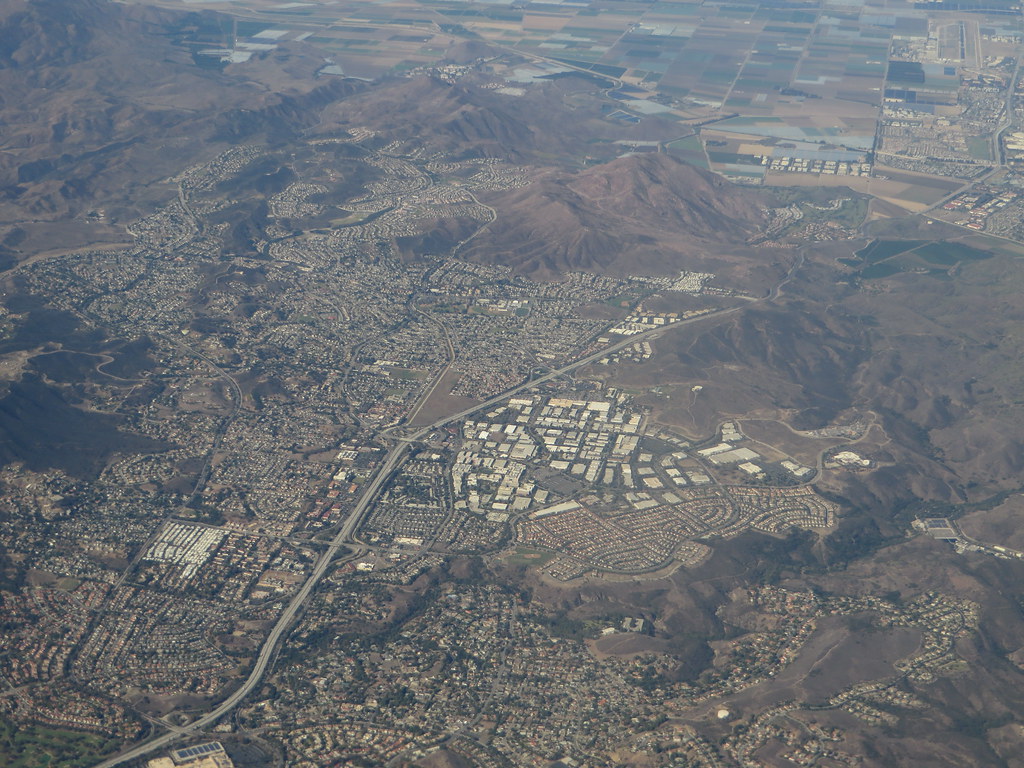What does one call a thousand geo-oddities? Ultimately I decided to use the metric prefix “Kilo,” although kilogeooddity and kilooddity both looked clunky with all of those extra vowels. Ultimately I coined the phrase kiloanomaly, equating to units of a thousand objects combining to form singular anomalies. It almost sounded like a Hawaiian word. I liked it!
There were numerous examples of kiloanomalies. I’ll highlight a few of my favorites.
Thousand Oaks

The City of Thousand Oaks in California was probably the most well-known urban forest of a thousand oaks that I uncovered, with over 125 thousand residents (map). There were plenty of others of the same name too, even in California (neighborhoods in Berkeley and San Jose at the very least). I then found Thousand Oaks in Florida, Missouri, and Texas, and a Thousand Oaks golf course in Michigan.
That’s a lot of acorns!
Thousand Islands

I noted in Just as Enigmatic that the area known as the Thousand Islands on the Saint Lawrence River between Canada and the United States didn’t actually have a thousand islands (map). Rather, those early explorers must have had a sense of modesty because there were actually 1,864 islands once they were all tallied.
What about Thousand Island (without an “s” after Island) salad dressing? Logically enough, “According to The Oxford Companion of Food and Drink, ‘the name presumably comes from the Thousand Islands between the United States and Canada in the St. Lawrence River.’”
Valley of a Thousand Falls
I learned of a Valley of a Thousand Falls in Mount Robson Provincial Park, in British Columbia, Canada. It’s the area between two small bodies of water, Berg Lake and Kinney Lake (map).
What do a thousand falls look like? I found a short YouTube video that provided a nice preview.
The valley can be accessed from the Berg Lake Trail [link no longer works]:
“… a world-renowned backcountry hiking trail. Gaining just under 800 metres in 23 kilometres, the trail traverses three biogeoclimatic zones. This trail takes hikers to some of the best scenery in the province. Beyond Kinney Lake, the trail enters the Valley of a Thousand Falls. Fed by the massive Mist, Berg and Robson glaciers, visitors often see huge sections of ice break off or ‘calve’ into the blue/green, silt-laden waters of Berg Lake.”
Biogeoclimatic is a great word that I need to add to my vocabulary although I still like kiloanomaly more.
Valley of a Thousand Hills
Valley of a Thousand Hills, South Africa
The second valley with a thousands objects I discovered online was the Valley of a Thousand Hills in the province of KwaZulu-Natal, South Africa. I wanted to use a better map. Unfortunately, I found it hideously difficult to find a Terrain View option on the new Google Maps. Also, apparently it’s impossible to embed an object in that mode. I’ll provide a link though: (map).
The Valley of a Thousand Hills is a major tourism destination.
“The breathtaking Valley of a Thousand Hills is an exciting component of Durban and South Africa’s province of KwaZulu-Natal – the Kingdom of the Zulu… an hour’s drive from the centre of Durban. The area is named after the thousands of hills which tumble down to the mighty Umgeni River, which flows from the distant Drakensberg Mountains to the warm inviting Indian Ocean.”
It’s centered on the confluence of the Umgeni and Msunduzi (Duzi) Rivers, halfway between Durban and Pietermaritzburg
Thousand Ships Bay
I found very little on Thousand Ships Bay in the Solomon Islands. However, it’s located “on the south coast of Santa Isabel Island… between San Jorge Island and Santa Isabel Island.” So the story goes — and who knows if it’s true — that the label came from “Spanish explorer Mendaña who named the location ‘Thousand Ship Bay’ [because he] believed a thousand ships could fit into the bay.” Álvaro de Mendaña y Neira was indeed the first European to see the Solomon Islands in 1568. He named a lot of its individual islands so maybe the story had a grain of truth. However, the explanation seemed pretty lame even if true.
Many centuries later, Thousand Ships Bay was “occasionally used by the Japanese as a seaplane base or temporary ship anchorage from May to August 1942.”
Thousand Circles
A hearty thank you to everyone who read all the way to the end of this post. The very first Twelve Mile Circle entry appeared on November 6, 2007. So this is article number 1,000. I hope I’m still motivated to write when it’s time to feature The Land of 10,000 Lakes.

Leave a Reply